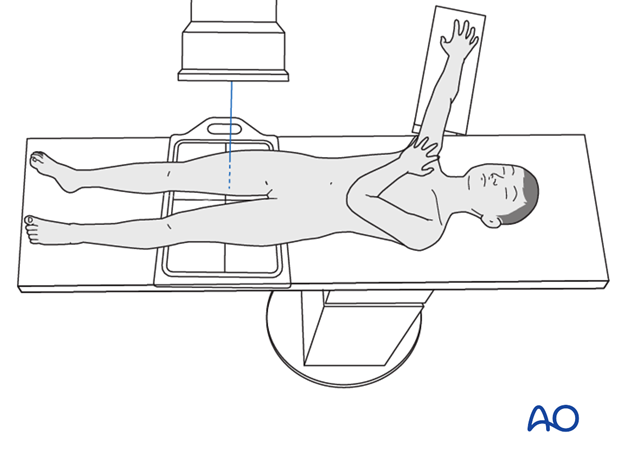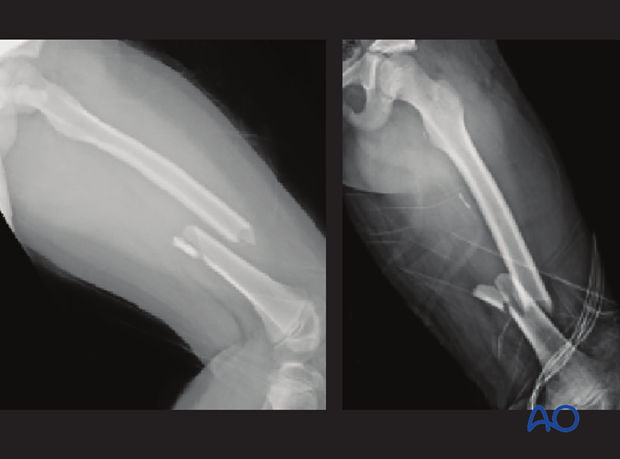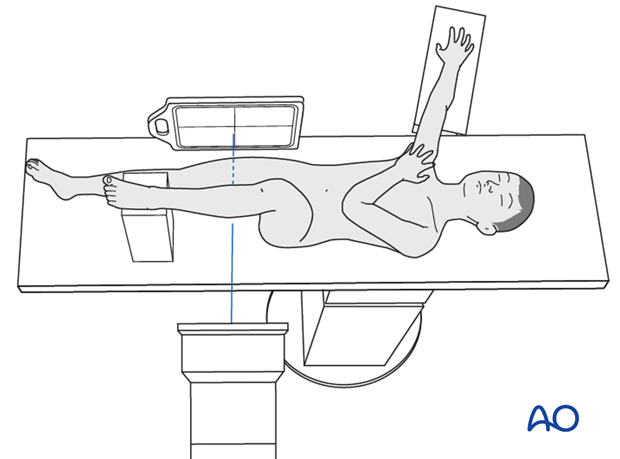Radiological evaluation
1. Preliminary remarks
The purpose of radiological assessment is to:
- Identify the location and extent of injury
- Classify the injury pattern
- Assess the degree of displacement
- Assess stability
- Identify additional injuries
- Identify preexisting contributory pathology (eg, cysts or tumors)

2. Plain x-rays
Satisfactory radiological examination can be difficult because of pain and the compliance of the child (and the parents).
This requires patience, time, and an experienced and specialized radiographer.
Good quality x-ray images in two planes (anteroposterior (AP) and lateral) must be obtained in all patients with suspected femoral shaft fracture and should include the entire femur.

Pearl: In a trauma situation, it is not always possible to move the limb and a cross-table view can be used to obtain a lateral radiograph (as illustrated).
Pearl: X-rays of the contralateral femur may be helpful to determine implant size.














